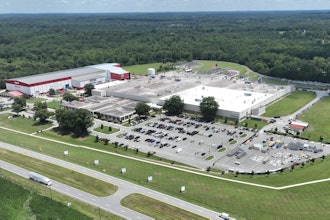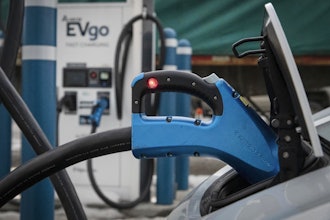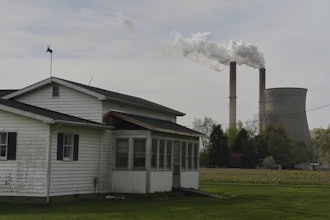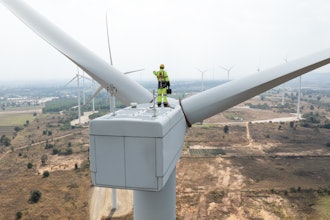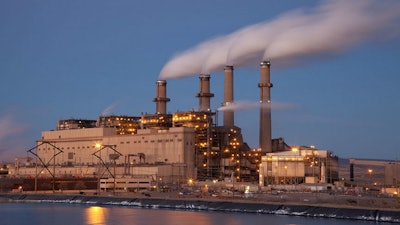
ALBUQUERQUE, N.M. (AP) — One of the largest coal-fired power plants in the U.S. Southwest would undergo a $1.4 billion overhaul as part of a proposal to keep the plant operating for at least another decade while meeting stricter environmental requirements aimed at reducing greenhouse gas emissions.
U.S. Deputy Secretary of Energy Mark Menezes was in New Mexico on Monday to discuss the project, saying he believes carbon capture, use and storage technology — or CCUS — could be a game changer for fossil-fuel generation in the U.S. and around the world.
“Rather than driving out fuels that produce emissions, we drove emissions down while producing from these same fuels. We want to build on that amazing process," he said. "CCUS is an an incredible example of innovation, one that has the potential to drive emissions down to zero, making fossil fuels as emission-free as renewables.”
Menezes released a report prepared for the Energy Department that concluded retrofitting the San Juan Generating Station would result in significantly more jobs for northwestern New Mexico than plans that involve replacing the plant with a mix of new natural gas-fired generating stations and solar and battery storage systems.
The report also looked at the economic impacts of the different scenarios on the Navajo workforce that has depended on the plant and adjacent coal mine for decades.
The San Juan Generating Station is set to close in 2022, and local elected leaders have warned that shuttering it will result in a loss of more than 1,500 jobs and $53 million in annual state and local tax revenues.
Enchant Energy and the city of Farmington are negotiating with Public Service Co. of New Mexico and the other owners to acquire the plant and outfit it with new technology. Under the plan, the company says 90% of the carbon dioxide could be stripped from emissions, with some being sold to the oil and gas industry to use in the recovery process and some being injected into the ground as part of a research project.
The technology was used on a much smaller scale in Texas. Company and government officials said if Enchant gets the green light, that would make the San Juan Generating Station the largest carbon capture project and the lowest carbon-emitting, large-scale fossil fuel power plant in the world.
Menezes said the goal is to commercialize the technology and move it from the prototype stage to the market place where it could be used on power plants around the world.
He acknowledged that the cost is still a hurdle and that the work being done by Enchant and research by New Mexico Institute of Mining and Technology, national laboratories and others is helping to bring it down. He said the Energy Department has made its own investments through grants and other funding.
The project also was the topic of a recent legislative meeting. A bipartisan contingent of state lawmakers noted that the project has the potential to stave off negative economic effects on rural communities while meeting New Mexico's environmental mandates to be emissions-free by 2045.
“If we make this happen here, all of a sudden we become the world leader in carbon capture, use and sequestration and I mean world leader. There are places all over the world that are looking at this, thinking about it, but they want to see it really happen. And this is where it can really happen,” said Sen. Bill Sharer, a Republican whose district includes the power plant.
Enchant Energy CEO Cindy Crane said the San Juan plant was an attractive candidate because it has a stable coal source just next door at the San Juan Mine and already has low emissions of nitrogen and sulfur oxides, mercury and particulate matter. It's also situated at the center of the Southwest's electricity transmission system and is close to a pipeline that could funnel carbon dioxide to the some of the busiest oilfields in the nation.










